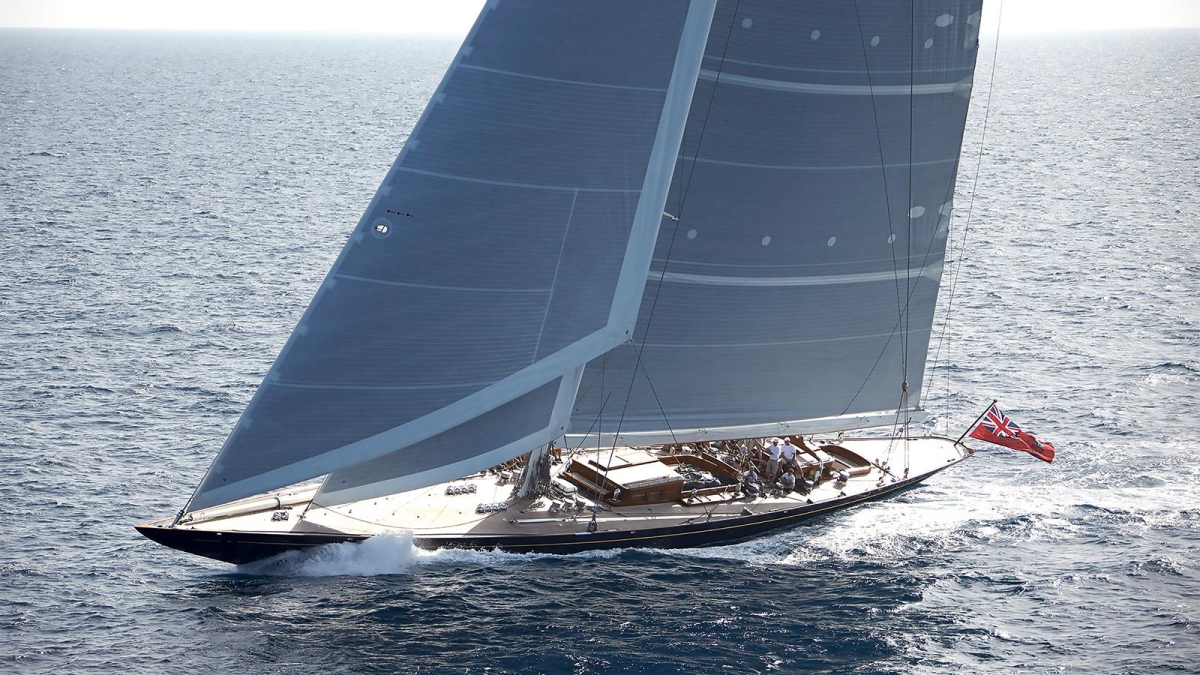In the 1930s, when the rule was first introduced, J-Class yachts were the pinnacle of world yacht racing. But by 1940 many had been stripped or broken up for scrap metal for the war effort or just abandoned and left to rot in mud berths. Decades later several of these classic greyhounds of the sea have been rebuilt and restored and are now part of a healthy and spectacular racing class that has also witnessed a number of new builds… or ‘new old’ builds. And as the level of racing in a remarkable fleet has increased so inevitably has the demand for ‘faster’ technology. Enter Southern Spars.
As in all development classes, the Js are restricted in what modifications can be made to the platform in the search for speed –but for the rig it is a different story.
Naturally modern design, manufacturing processes and materials allow a company like Southern Spars, immersed in grand prix sailing, to make those towering J-Class rigs massively lighter than their original predecessors – most of which were fabricated in steel. But since the first carbon mast appeared in this specialised fleet the race for even lighter rigs with lower VCGs has powered inexorably onward. For example, the recent upgrade of the Hanuman rig package yielded a saving of more than 800kg across mast, boom and rigging compared with its carbon predecessor. The previous rig was built by another manufacturer just a few years ago and yet this latest weight reduction is the equivalent of removing 10 crew sitting on the second spreader. Even on a yacht this size that’s a big gain.
‘While many of these yachts were launched almost a century ago, the mast specifications nowadays are expected to be in the same ball park as the most modern race yachts,’ says senior designer and company co-founder Steve Wilson.
‘Our latest rigs for Svea and Hanuman are designed as we would a TP52 or Maxi72, with the only real extra consideration being that these yachts are usually delivered on their own bottoms so additional components like delivery sail attachments need to be factored for and designed in.
While all J-Class yachts are different, something they all have in common is the drive to more and more headstay tension. ‘With our latest J-Class rigs it is possible to carry up to 35 tonnes on the headstay… For Hanuman that represents a 30 per cent increase over their previous rig. Incredibly, the headstay sag on Hanuman now tops out at just one per cent (of overall stay length).
Other trends over the past few years include the introduction of carbon rigging. The benefits here over Nitronic rod are well documented. Future Fibres’ ECsix carbon rigging offers a 70 per cent weight saving in the cables alone. They are also more durable. During an experiment to compare longevity of ECsix, PBO and rod rigging, hydraulic rams were used to cycle cables 100,000 times from zero load to 50 per cent of break strength. At 80,000 cycles the Nitronic rod broke. At 100,000 cycles PBO had lost 20 per cent of its strength; meanwhile, ECsix displayed no measurable change.
The testing continued on ECsix to one million cycles. Then the cable was pulled to destruction. It broke at the expected failure load. Meaning that after one million pulls break strength hadn’t varied.
Topaz, the latest ‘new’ J-Class yacht, is the first of the fleet to experiment with another product from Future Fibres: an ECtorque torsional headstay. ECtorque offers a low-drag, high-efficiency system for deploying and dousing the yacht’s giant headsails, making mark roundings less manic and ‘slightly’ less hard work for the crew.
How these developments play out on the racetrack will be on display for the world to see shortly when the Js race alongside the 2017 America’s Cup fleet at their own regatta in Bermuda during the Cup itself. Two America’s Cup classes, separated by 85 years, side by side… It is unlikely those original J-Class sailors would have ever envisaged that happening when they were hauling up those tons of canvas by hand during the first half of the last century.

